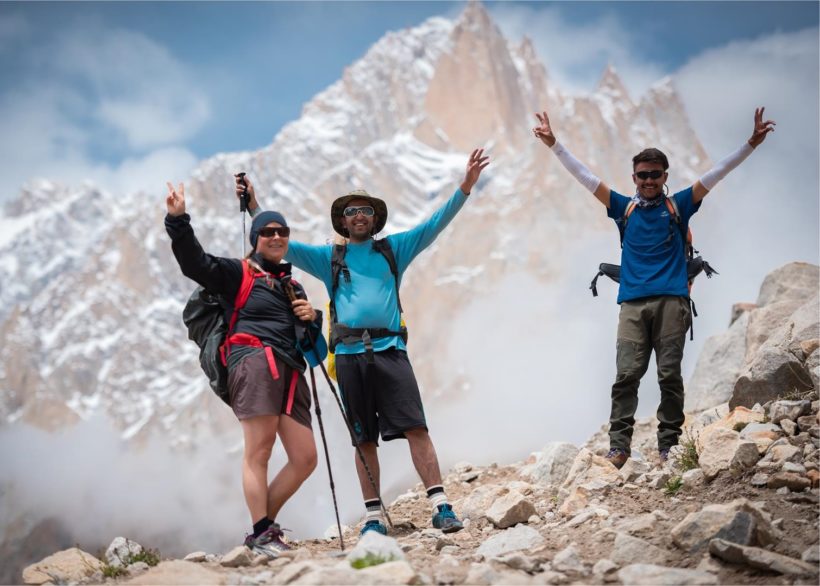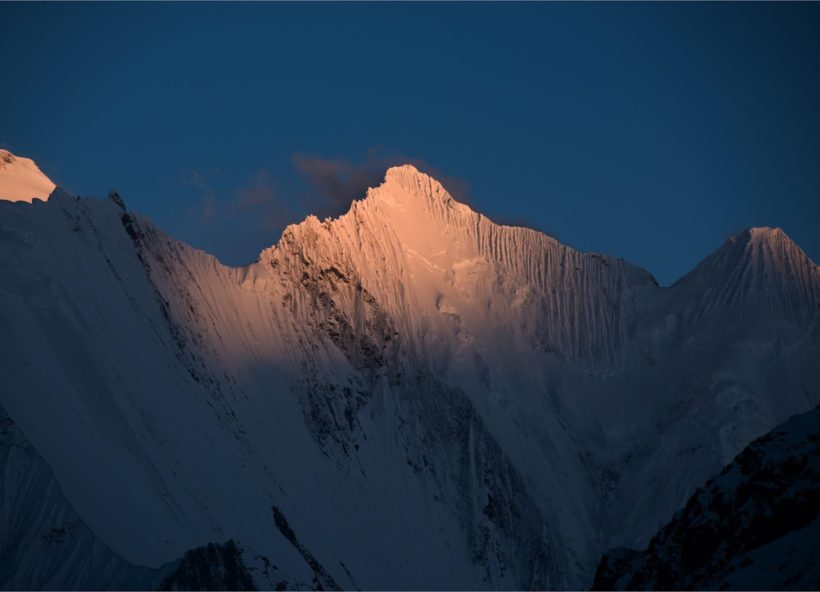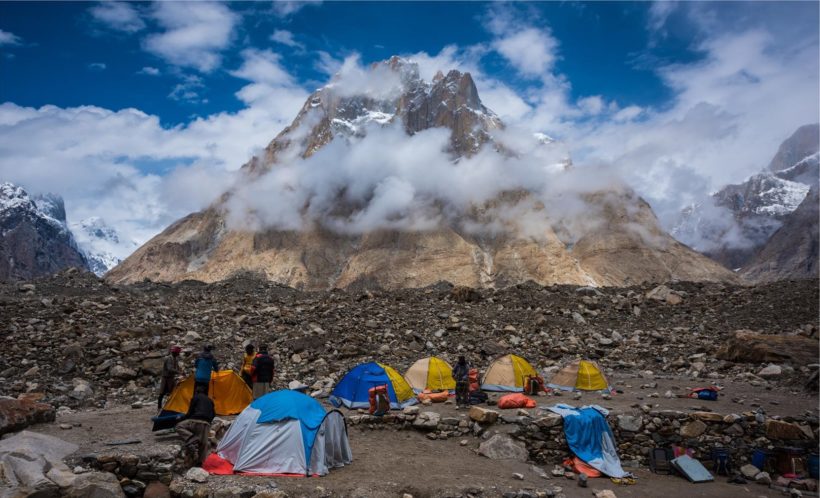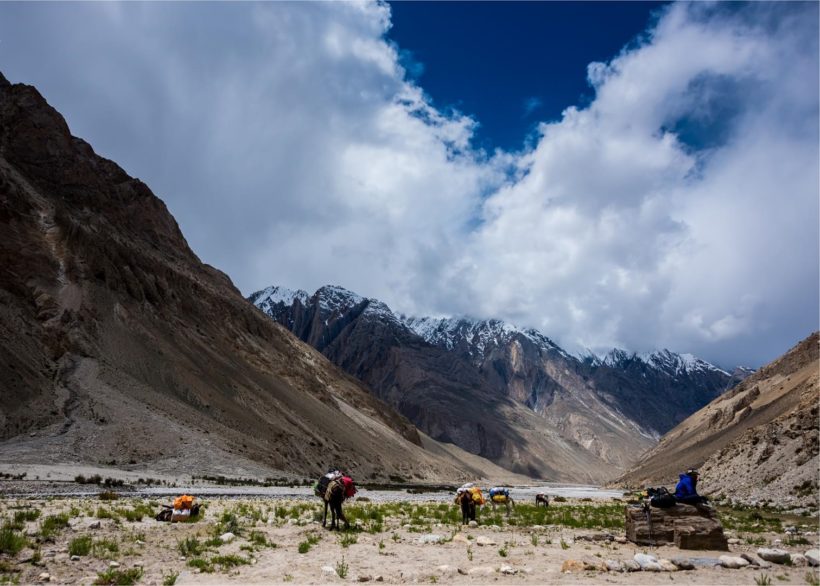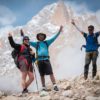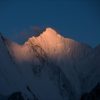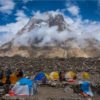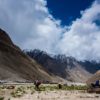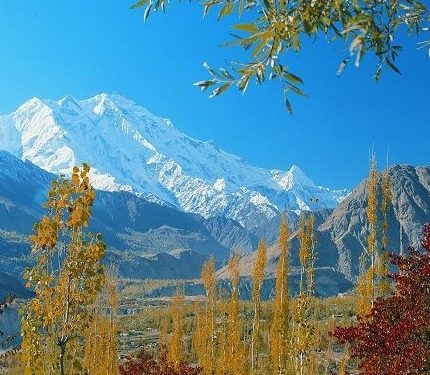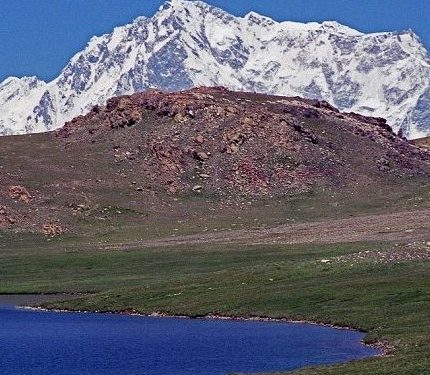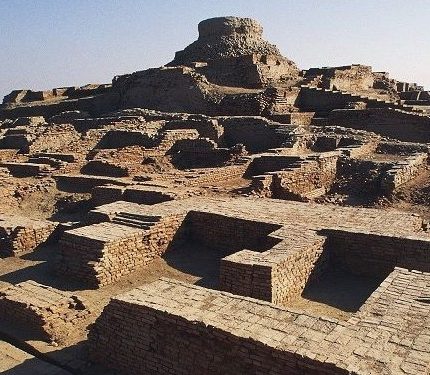| Day 1: Islamabad – Arrive at Islamabad and transfer to hotel.
Day 2: Fly Gilgit and drive to Hunza (2600m)
We will take you to the above 700 year old Baltit Fort, the old residence of Mir of Hunza, built on a rocky outcrop at the base of the Ultar Nala. You will also visit the Altit Fort which is 200 years older than Baltit Fort. Evening you can spend your time walking in the Karimabad Bazaar and enjoy view of Rakaposhi (7788m), Diran (7266m), Golden Peak (7027m), Ultar (7388m), Distaghill (7885m) etc. hotel for overnight.
Day 3: Hispar Village: (3000m) 5-6 hours easy cross of Kunyang glacier and continue on a gentle walk to Hispar Village after crossing Hispar River on a wire pulley. Small village of about 120 houses with school, small clinic and a wooden mosque. Overnight in tent.
Day 4: Dachigan: (4050m) 5-6 hours hard walk of boulder hopping, with last views of Hispar Pass top, from the middle of Hispar Glacier. Continue to the north where Ablation valley widens into a sheltered grassy pasture. Overnight in tent.
Day 5: Yutmaru Glacier: (4350m) 5-6 hours traverse KhaniBasa glacier relatively easy going with fine views of Kanjut Sar (7760). Camp near Yutmaru glacier in a flat sheltered field. Overnight in tent.
Day 6: Traditional rest day. Overnight in a tent.
Day 7: KhaniBasa: (4580 m) 5-6 hours descend with hidden crevasses, on boulders, scree, and moraine, near to the junction of KhaniBasa Glacier. The Hispar glacier side of the pass is more crevassed than the Biafo side. Have a view oh Kanjut Sar (7760m), the 29th highest peak of the world at the head of the KhaniBasa glacier. Overnight in a tent.
Day 8: Hispar Pass: (5151m) 4-5 hours start very early in the morning for a steady climb (20-30 degree) to the top of Hispar Pass. The route wends gently up the center with giant crevasses. The top provides spectacular views on all sides. Camp on the wide flat top of the pass. Overnight in a tent.
Day 9: Snow Lake (Lukpe Lawo): (4770m) Day free to optionally exploration of Snow Lake. Snow Lake was first explore in 1892 by W Martin Conway, who estimated the area at 777 square km. This was than confirmed by Eric Shipton who visited in 1937 but he measured it 700 square km. Overnight in tent.
glacier broadens as the Sim and Biafo glacier meet.
Day 10: Hispar B.C: (4770m) 4-5 hours walks on snow (covered ice) with the danger of crevasses. Cross intersection with Sim Gang Glacier and Snow Lake (Lukpe Lawo) with one and a half km thick ice flowing at about 300m a year. Camp at snow. Overnight in tent.
|
Day 11: Karpogoro: (4680m) 4-5 hours constant breezing makes the ascent colder and more thrilling. The Ascent is gradual. Measurements here show the ice to be almost 1.5-km in depth. Therefore, gaiters are needed and rope is mandatory. Camp at the eastern margin of the glacier, where the Sim and Biafo glaciers meet. It is guarded by a crevasse field and must be approached carefully. Overnight in tent.
Day 12: Napina: (4410m) 4–5 hours gentle ascends along the Ablation valley and then crossing over crevasses out to the easy white ice. A green camp with fresh water. It is also known as Marpogoro. Overnight in tent.Day 13: Traditional rest day. Overnight in a tent.Day 14: Baintha: (4020m) 5-6 hours, first walk along the valley than heading out across the lateral crevasse to the smooth White Center of the Biafo glacier. Baintha is also known as Conway’s camp as Sir. W.Martin Conway camper here n 1892. Baintha is a grassy area with the clear stream flowing through deans willow shrubs surrounded by flowers. Overnight in tent.Day 15: Mango: (3650m) 5-6 hours A gentle climb for a couple of hours on unstable boulders with the view of Latoks Peaks ahead then cross the crevasses to the green campsite at a side stream with grass and willow bushes. Overnight in tent.Day 16: Namla: (3400m) 6-7 hours walk providing panoramic views down on to the boulder-strewn Biafo Glacier stretching Northwest. Campsite is a flatfish place beside a side stream with willow bushes. Overnight in tent.Day 17: Askole: (3090m) By jeeps drive to Askole (8-9 hours). The last village of about 50 houses. The villagers grow their own cereals, vegetable and fruit and own large herds of sheep’s, goats, yaks and dzos. Overnight in tentDay 18: Askole / Skardua) Day free at Skardub) If you are driving, complete road journey (07–08 hours) to Skardu (275 km) En-route have good view of Nanga Parbat (8125m) at the junction of Indus river and the rapids and fall of Indus river. Overnight at hotelDay 19: Fly to Islamabad
Leisure day. Overnight at hotel.
In case cancellation of flight drive from Babusar – Islamabad. Overnight at hotel.
Day 20: Transfer to airport for your homeland flight. End of Services with HAL.
|
